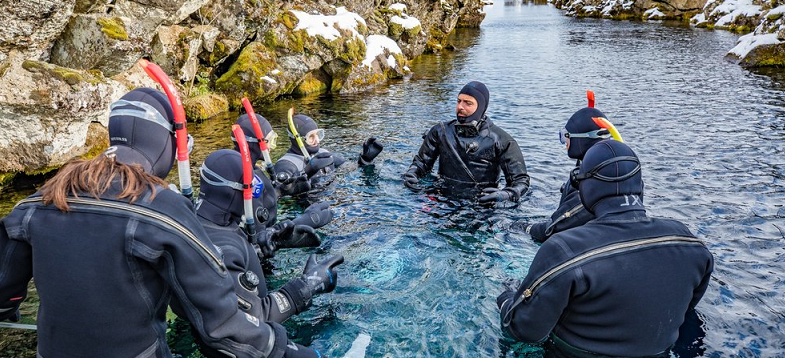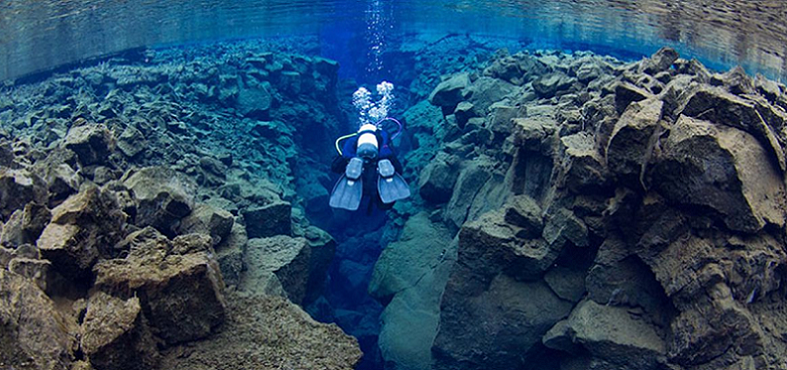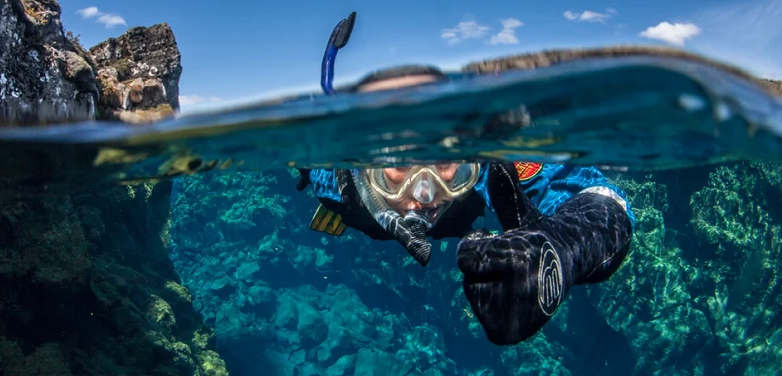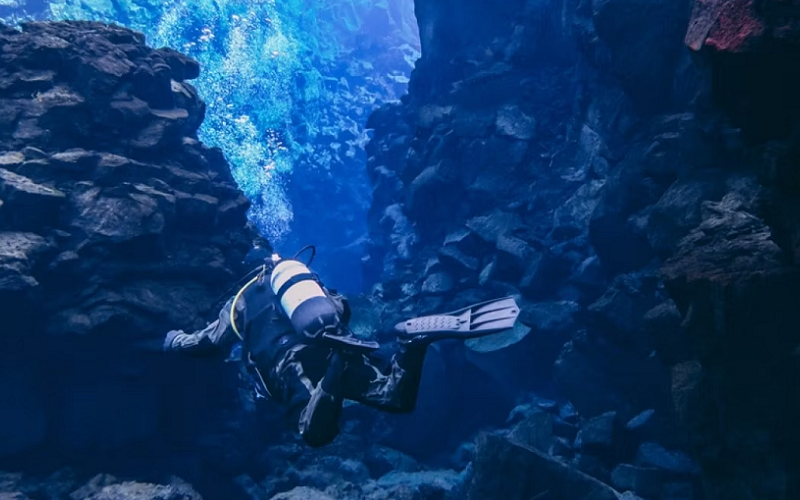Iceland is a land of stunning natural beauty and is home to some of the world’s most incredible underwater landscapes. Snorkeling in Iceland is a truly unique experience that allows you to explore the crystal-clear waters of its lakes and fjords, and witness the incredible geothermal formations that lie beneath the surface. Here we take a closer look at some of the best snorkeling spots in Iceland, the equipment and clothing you’ll need to stay safe and comfortable, important safety tips, and responsible snorkeling practices.
Overview of Snorkeling in Iceland
Snorkeling in Iceland is a popular activity that allows visitors to explore the country’s unique underwater world. The crystal-clear waters, stunning geothermal formations, and diverse marine life make snorkeling in Iceland a one-of-a-kind experience.
Iceland has several world-famous snorkeling spots, such as the Silfra Fissure in Thingvellir National Park, where you can swim between the North American and Eurasian tectonic plates. The underwater hot springs of Kleifarvatn Lake and the geothermal underwater world of Lake Myvatn are also popular spots for snorkeling in Iceland.
The Westfjords’ pristine fjords offer a chance to snorkel in some of the most untouched and remote areas of Iceland. While snorkeling in Iceland can be an exciting and memorable experience, plan and prepare properly to ensure your safety and enjoyment.

Snorkeling Spots in Iceland
Iceland has some of the most unique and breathtaking snorkeling spots in the world. Snorkeling in Iceland is unique for several reasons, including it’s clear water and interesting marine life.
Silfra Fissure
The Silfra Fissure is located in Thingvellir National Park and is a popular snorkeling spot for its crystal-clear water and underwater landscapes. The fissure is situated between the North American and Eurasian tectonic plates, and snorkelers can witness the unique geological formations of Iceland’s landscape. The water is also incredibly clear, allowing for a visibility of up to 100 meters, making it an unforgettable experience.
Kleifarvatn Lake
The underwater hot springs of Kleifarvatn Lake offer a unique snorkeling experience with bubbling mud pools and hot springs to explore. The geothermal activity in the area creates a one-of-a-kind underwater landscape that is sure to amaze. Snorkeling in Kleifarvatn Lake is recommended for more experienced snorkelers as the water temperature can be cold and the currents can be strong.
Lake Myvatn
Lake Myvatn is a popular geothermal area in North Iceland, and its underwater world is a must-see for any snorkeler visiting the country. The underwater landscape includes hot springs, lava formations, and diverse marine life. Snorkeling in Lake Myvatn is a great way to experience the unique geology of the area and appreciate Iceland’s natural beauty.
Westfjords’ Fjords
The Westfjords region in Iceland is known for its untouched and remote areas, and its fjords offer a chance to explore some of the country’s most stunning natural landscapes. The fjords are home to clear water, diverse marine life, and colorful underwater flora. Snorkeling in the Westfjords is a great way to appreciate Iceland’s marine ecosystems and get away from the crowds.

Equipment and Clothing for Snorkeling in Iceland
Proper equipment and clothing are essential for a safe and comfortable snorkeling experience in Iceland. Some recommended snorkeling gear includes a snorkel, mask, and fins. It’s also recommended to wear a wetsuit to protect from the cold water temperature. A thermal base layer is also recommended for added warmth.
When snorkeling in Iceland, choose gear that fits well and is comfortable, as you’ll be spending a significant amount of time in the water. It’s recommended to bring a towel, warm clothing, and waterproof bags to keep your belongings dry.
It’s also important to take care of your equipment and properly rinse it after each use. Proper clothing and equipment are crucial to ensure your safety and comfort while exploring Iceland’s underwater world.

Safety Tips for Snorkeling in Iceland
Snorkeling in Iceland can be a safe and enjoyable experience, but take proper safety precautions. One of the most important safety tips is to always snorkel with a guide, as they can provide valuable information about the water conditions and help you navigate through the underwater landscape.
Understanding the water conditions, such as currents and waves, is also important for your safety. It’s recommended to always check weather and water conditions before snorkeling and to avoid snorkeling in areas with strong currents or dangerous surf. Preparing for emergencies is also important, and it’s recommended to bring a safety whistle, a buoyancy aid, and to always snorkel with a buddy.
It’s also important to stay warm and avoid hypothermia by wearing proper clothing, such as a wetsuit and thermal layers. By following these safety tips, you can ensure a safe and enjoyable snorkeling experience in Iceland.
Environmental Conservation When Snorkeling in Iceland
As with any outdoor activity, be mindful of the impact we have on the environment when snorkeling in Iceland. One of the most important ways to practice environmental conservation when snorkeling is to avoid touching or disturbing the marine life or natural formations. This includes avoiding standing on or touching the underwater rocks, coral, or any other underwater vegetation.
It’s recommended to avoid using sunscreen and other chemicals that may be harmful to the marine life and water quality. It’s also important to dispose of any trash or waste properly and avoid littering in the water or on land. Following responsible snorkeling practices, such as not disturbing the environment and reducing your impact on the ecosystem, is crucial to preserving Iceland’s natural resources for future generations

